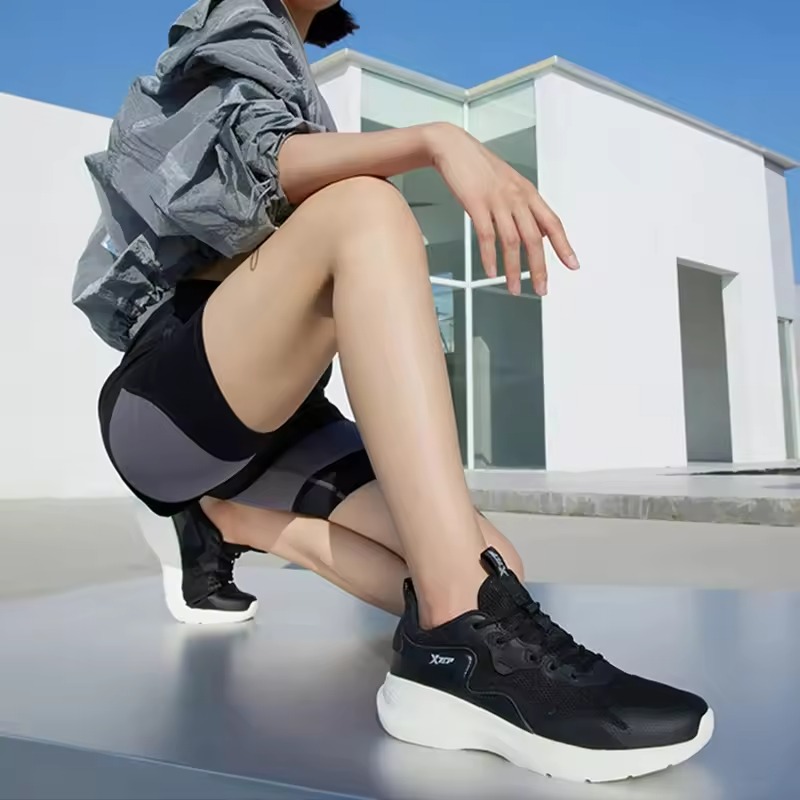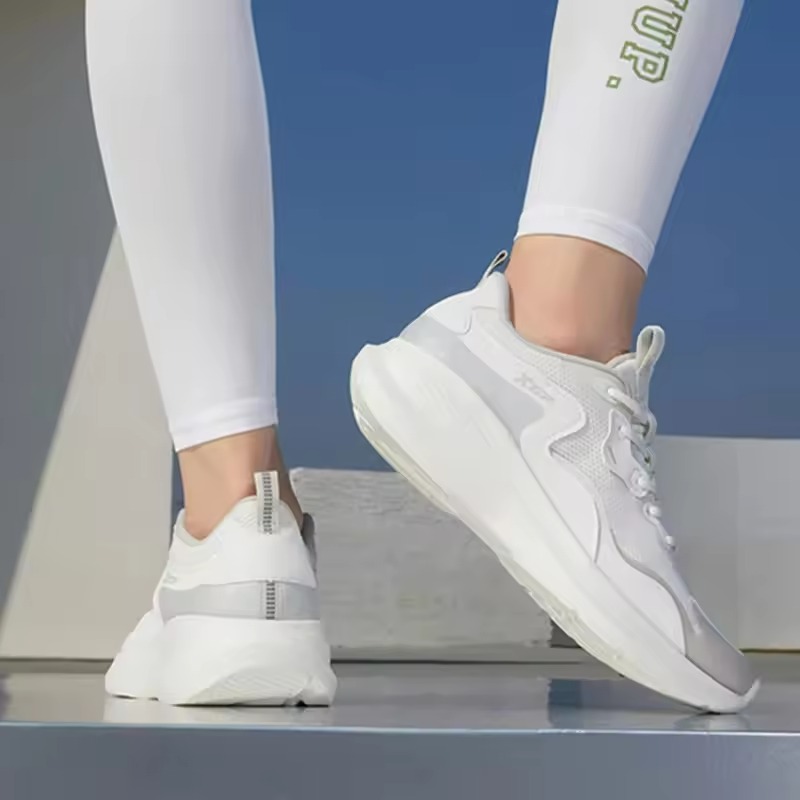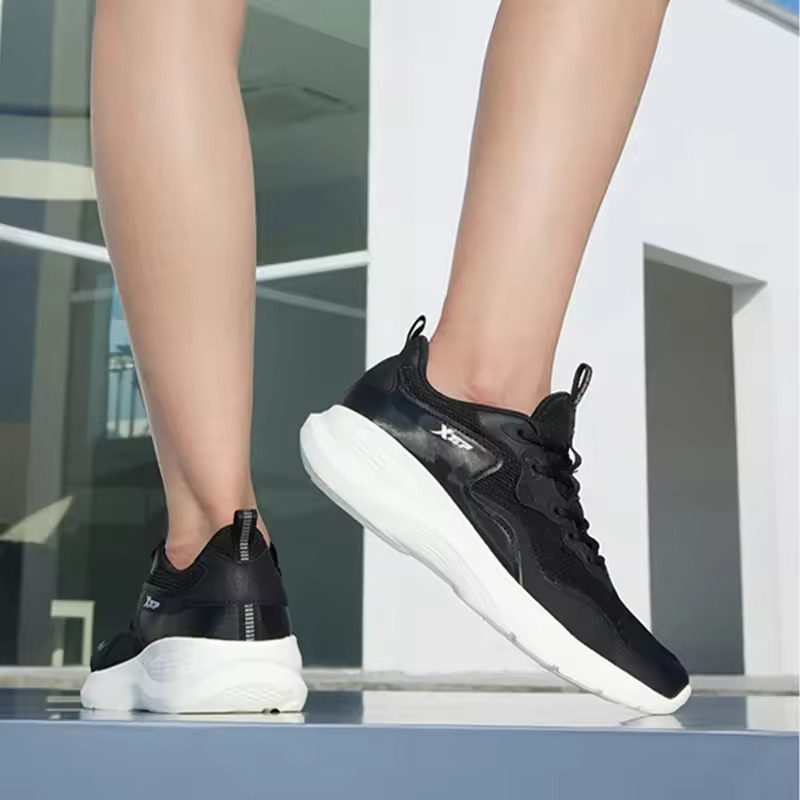What Are Stability Running Shoes
Stability running shoes are a must for runners with pronation issues. They offer a midsole with extra support, helping to correct your gait. These shoes have firm, supportive features such as medial posts or guide rails. These features reduce the inward roll of the foot during a run, which is common in overpronators. Stability shoes also tend to have a more structured build. This helps distribute the impact of each step more evenly. That means less strain on your knees and joints. In essence, the ‘stability’ in these shoes means that they provide the necessary support to keep the foot aligned. This alignment is crucial during the repetitive motion of a marathon run. When you choose the best stability running shoes, you’re investing in comfort, injury prevention, and enhanced performance.

Importance of Stability in Marathon Running
When running a marathon, stability plays a pivotal role. Proper foot alignment is vital. It helps to minimize injuries during long-distance runs. Overpronation, where the foot rolls in excessively, can lead to unnecessary strain. Without stability, muscles and joints overwork, risking injuries like shin splints or runner’s knee. Stability running shoes ensure a safer and more comfortable marathon experience. They support natural gait cycles and reduce stress on lower body parts. Marathoners benefit from stability shoes through enhanced endurance and performance. A stable foundation is crucial for energy conservation over miles of running. Stability in marathon running is not just about comfort. It also significantly impacts overall running efficiency and health.
Top Rated Marathon Stability Running Shoes
Selecting the right pair of marathon stability running shoes is critical. These shoes significantly affect your comfort and running performance over long distances. With numerous options available, it can be overwhelming to pick the best. But, worry not. We’ve compiled a list of top-rated shoes in this category. Each pair has proven record for providing exceptional stability and support.
Here are the key contenders:
- Asics GT-2000 series: Asics GT-2000 running shoes feature dynamic duomax support system. This enhances stability and support, while reducing weight and increasing platform support.
- Brooks Adrenaline GTS: Renowned for their balanced and supportive ride, these shoes come with guide rails. They are designed to protect your knees by keeping excess movement in check.
- Saucony Guide series: With an emphasis on medial support, these shoes help prevent overpronation. They also boast plush cushioning, which ensures a comfortable marathon run.
- Mizuno Wave Inspire: Mizuno’s wave technology offers a unique approach to stability. It provides both cushioning and support, giving runners a secure feeling through their gait cycle.
- New Balance 860v series: These shoes provide consistent support and a firm but responsive ride. They are a great choice for runners who require both durability and stability.
Each of these options presents a blend of comfort, durability, and stabilizing features. These are crucial for marathon runners, especially those dealing with overpronation. Make sure to analyze your specific needs. Consider your foot type, pronation pattern, and personal preferences when choosing. The best stability running shoes will help you achieve a safer, more comfortable, and faster marathon finish.
How to Choose the Right Stability Running Shoes
Choosing the right stability running shoes is essential for marathon success. Here is a step-by-step guide to help you make the best choice:
- Analyze Your Foot Type: Are you flat-footed, do you have a normal arch, or do you have a high arch? Your foot type influences which shoe will offer the best support.
- Understand Your Pronation Pattern: Overpronators tend to need more support. Determine your pronation by looking at the wear patterns on your old running shoes or consulting with a professional.
- Consider Shoe Fit: The best stability running shoes should fit snugly without squeezing your feet. There should be a thumb’s width of space between your longest toe and the shoe’s end.
- Test the Support Features: Look for features like medial posts or guide rails. They are vital for correcting pronation issues and providing the needed stability.
- Prioritize Comfort: Shoes can have all the right features but still not feel right. Always try them on and go for a test run if possible.
- Gauge the Cushioning: While support is crucial, don’t ignore cushioning. It adds comfort and impacts shock absorption during your run.
- Check Durability: Marathon training and the race will put shoes through their paces. Make sure the shoes you pick are up to the task.
- Read Reviews and Recommendations: Learn from other marathon runners. Online reviews and recommendations can offer valuable insights into a shoe’s performance.
Take your time in selecting the best stability running shoes. The right pair will safeguard your joints, improve your gait, and could be your ally in achieving a personal best. Remember to try different brands and styles, as the best shoe for someone else might not be the best for you.

The Role of Arch Support and Overpronation
When considering the best stability running shoes, arch support is a critical factor. It’s the part of the shoe designed to conform to the specific shape of your foot’s arch, which helps to distribute weight and impact more evenly throughout your stride. Arch support aims to provide a foundation for your foot, discouraging excessive inward roll, also known as overpronation.
Overpronation is common and can lead to injuries if not addressed, especially in marathon runners who put their feet through intense, repeated stress. Overpronators, or runners with flat feet, typically benefit the most from enhanced arch support. Shoes with proper arch support align the foot and ankle, bringing them into a neutral position, which helps to prevent the inward roll.
Runners with normal to high arches might also experience overpronation, although it’s less common. For these individuals, the right amount of arch support is still important for maintaining stability. By keeping the foot in a neutral position, muscles and joints are less likely to be strained over the marathon course.
When selecting the best stability running shoes, take a close look at the level of arch support offered. It’s a key component of the shoe that can make a substantial difference in your running experience. Remember, not all arches are the same, and neither should be the support in your shoes. Always choose arch support that feels natural and comfortable, ensuring a well-balanced stride and reduced risk of overpronation-related injuries.
Balancing Cushioning and Support
Finding the best stability running shoes involves a balance. The shoes need to cushion yet support your feet. Too much cushioning can reduce stability. Not enough can lead to discomfort and injury. When it comes to marathon running, both features are key.
- Cushioning is about absorbing shock. It helps reduce the impact on your joints with each step. This is vital during a marathon. Soft cushioned shoes can give a pleasant feeling but can also promote overpronation. This can strain muscles and joints over long distances.
- Support refers to the shoe’s ability to correct foot alignment. It’s essential for overpronators who need control for their excessive inward foot roll. Strong support can prevent injuries, like plantar fasciitis or stress fractures, especially when running long distances.
The best stability running shoes will have a firm midsole with a softer top layer. This gives the right combination of support and cushioning. Look for shoes with a dual-density midsole or a supportive insole. These can guide your foot without compromising on comfort.
Remember, every runner is different. What works for one may not work for another. It’s important to try shoes on. Run in them to ensure they give both the cushioning and support needed. Do not just buy based on other’s recommendations. Choose what feels right for your feet and running style. Your feet will thank you mid-marathon.
Key Features to Look for in Marathon Stability Shoes
Selecting the perfect pair of marathon stability running shoes involves understanding key features. These features ensure that your shoes will offer the right mix of support, comfort, and durability, vital for the marathon journey. Here are the essential elements to consider:
- Medial Post or Guide Rails: Look for these support features, as they are crucial in managing overpronation.
- Arch Support: The right arch support is dependent on your foot type; choose according to your arch for a comfortable fit.
- Responsive Cushioning: Ensure the shoe provides sufficient cushioning without undermining the stability.
- Durability: Check the outsole and materials; your shoes should withstand the wear and tear of marathon training.
- Breathable Upper: A breathable shoe upper aids in temperature regulation and reduces moisture build-up.
- Secure Fit: Make sure the fit is snug and secure without squeezing your foot, allowing space for natural movement.
- Flexibility: While stability is key, the shoe should also allow for a natural foot motion.
Combine these features with a thorough fitting process. Try on different brands and styles. It’s best to test the shoes in a simulated running environment. Always listen to your body. The best choice will feel right and support your specific needs during the marathon.

Taking Care of Your Stability Running Shoes
Once you’ve found the best stability running shoes, taking care of them is key. Proper care extends their life and ensures consistent support and performance. Here’s how to keep your shoes in top condition:
- Clean Regularly: Brush off dirt and debris after each run. Wipe shoes with a damp cloth for deeper cleaning.
- Air Dry: Let your shoes air dry away from direct heat. Heat can warp the shape and affect the support features.
- Rotate Pairs: Use two pairs of running shoes to allow each pair to rest and regain cushioning between runs.
- Avoid Washing Machines: Don’t put your shoes in the washer. It can damage their structure and materials.
- Store Properly: Keep your shoes in a cool, dry place. Avoid damp areas that can lead to material breakdown.
- Replace Insoles: Swap out worn insoles for new ones to maintain cushioning and support.
- Monitor Wear: Check soles and uppers for signs of excessive wear. Worn spots can indicate it’s time for a new pair.
By following these tips, you maximize the lifespan of your best stability running shoes. You maintain their quality so they can keep stabilizing your stride throughout your training and marathons.